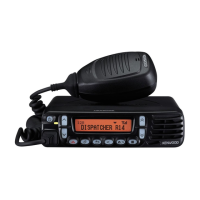
Do you have a question about the Kenwood NX-700 and is the answer not in the manual?
| Purpose | Digital Mobile Radio (DMR) |
|---|---|
| Maximum range | - m |
| Operating frequency | 136 - 174 MHz |
| Shockproof | Yes |
| Product color | Black |
| International Protection (IP) code | IP54 |
| Display type | LCD |
| Operating temperature (T-T) | -30 - 60 °C |
| Depth | 157 mm |
|---|---|
| Width | 160 mm |
| Height | 45 mm |
| Weight | 1380 g |
Recommended safety precautions for operating the transceiver.
Reference to manual sections for servicing the radio.
Using PC mode for transceiver programming and data management.
Procedure for programming the transceiver's firmware.
Detailed steps for the firmware programming process.
Procedure for cloning transceiver data between units.
Connecting the optional ignition sense cable (KCT-46).
Important safety and handling precautions before disassembling.
Detailed steps for removing the TX-RX PCB.
Steps to remove the speaker assembly.
Guidelines for correctly reassembling the transceiver.
Steps to reinstall the TX-RX PCB.
Explanation of the transceiver's frequency stages.
Detailed description of the receiver circuitry.
Detailed description of the transceiver's transmitter circuitry.
Explanation of the Phase-Locked Loop frequency synthesizer.
Description of the transceiver's control circuitry.
Description of the transceiver's power supply system.
Description of signaling circuits for QT, DQT, DTMF, etc.
List of components for the display unit (X54-3640-10).
List of components for the TX-RX unit (X57-7380-XX).
Parts list for the display unit (X54-3640-10).
Continuation of the parts list for the display unit.
Continuation of the parts list for the TX-RX unit.
Procedure to check voltage levels of key ICs.
Procedure to check clock signals for proper operation.
Checking essential control signals to the ASIC.
Verifying control signals fed into the ASIC.
Verifying ASIC input signals related to switches.
Verifying output signals from the ASIC.
Verifying ASIC signal outputs using software control.
Troubleshooting panel control signals on the TX-RX unit.
Troubleshooting panel control signals on the panel unit.
Verifying control signals for the display.
Verifying the display control signals.
Interpreting and resolving LCD error messages.
Procedures to follow after replacing the printed circuit board.
Steps after replacing the printed circuit board.
Using the programming software for configuration.
Entering test mode for adjustments.
Applying new labels to the replaced PCB.
Writing FPU data with KPG-111D if necessary.
Features and operation of the panel test mode.
Adjusted frequencies and signaling modes.
Procedures for tuning the transceiver in panel mode.
Steps to enter and navigate tuning mode.
Frequencies used for 5 reference level adjustments.
Table of adjustable items and their display parameters.
Detailed list of adjustable items and ranges.
Continuation of transmitter parameter adjustments.
Adjusting the transmitter balance for signaling.
Adjusting deviation for NXDN signals.
Adjusting deviation for analog signals.
List of required test equipment and their specifications.
Procedures for radio performance checks.
Procedure for checking frequency accuracy.
Procedure for checking high power output.
Procedure for checking low power output.
Procedure for checking microphone sensitivity.
Procedures for adjusting receiver parameters.
Adjusting the audio output level.
Adjusting receiver sensitivity 1, related to BPF.
Adjusting receiver sensitivity 2, related to BPF.
Adjusting RSSI reference levels for analog signals.
Common adjustment procedures applicable to multiple sections.
Adjusting receive assist parameters.
Adjusting transmit assist parameters.
Adjusting the real-time clock frequency.
Further receiver parameter adjustments.
Procedure for adjusting the transceiver frequency.
Procedures for adjusting transmitter parameters.
Adjusting the high power limit for the transmitter.
Adjusting the low power limit for the transmitter.
Adjusting the high transmit power output.
Adjusting the low transmit power output.
Adjusting QT deviation for signals.
Adjusting DQT deviation for signals.
Adjusting LTR deviation for signals.
Adjusting CWID deviation for signals.
Adjusting DTMF deviation for signals.
Order of deviation adjustments for different signal types.
Adjusting single tone deviation.
Adjusting MSK deviation for signals.
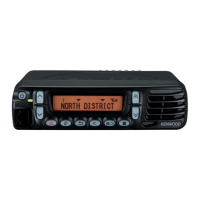

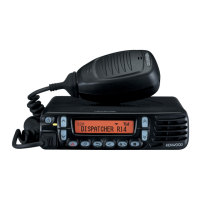
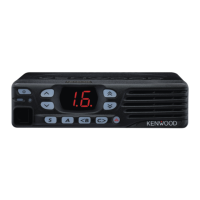

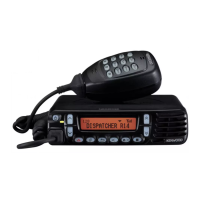
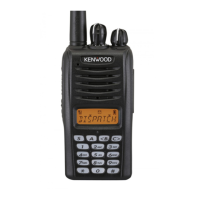
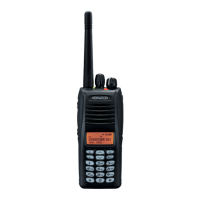
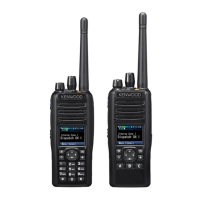

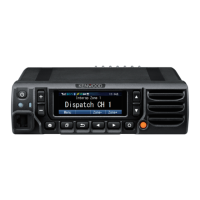

